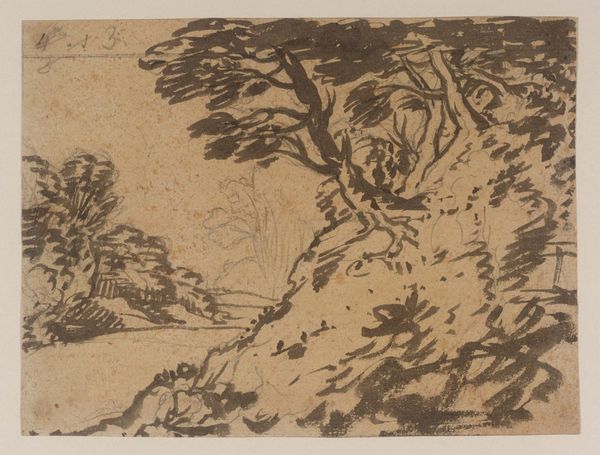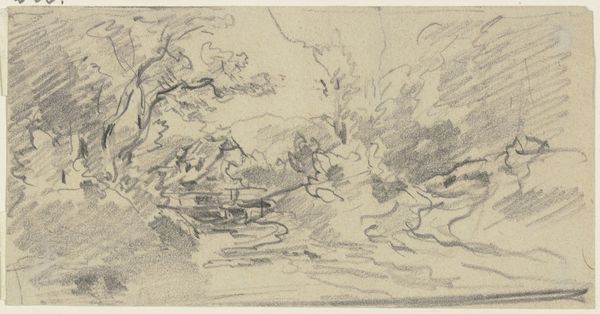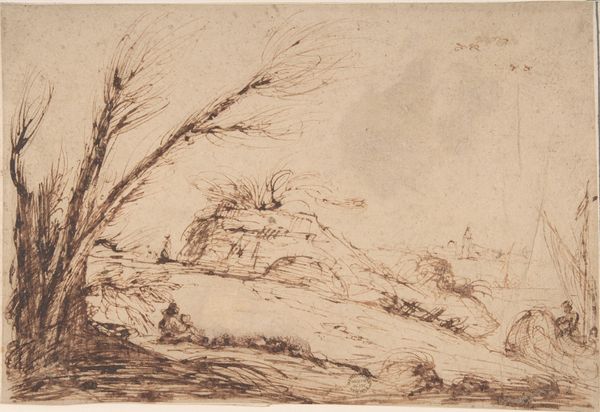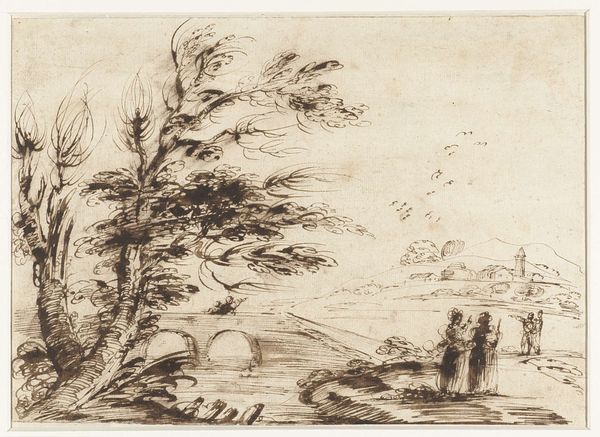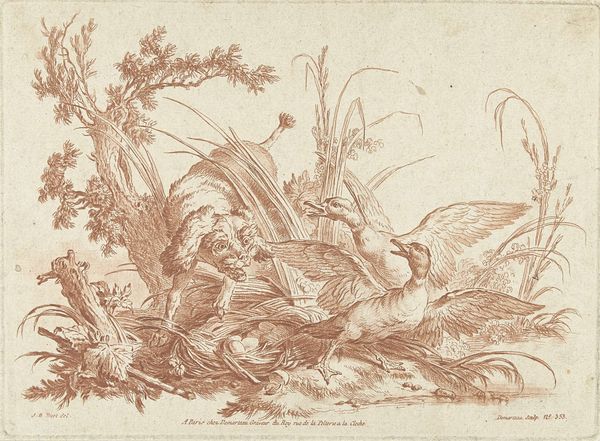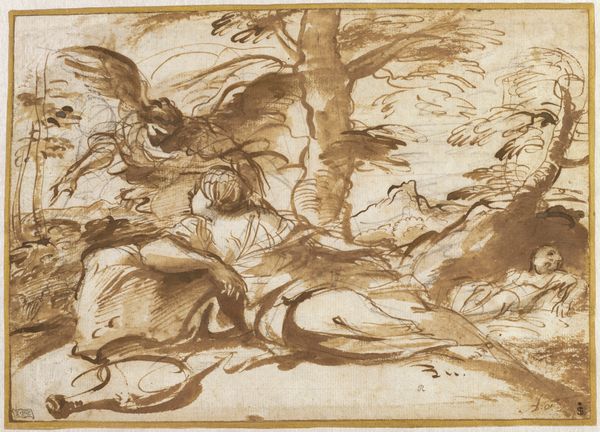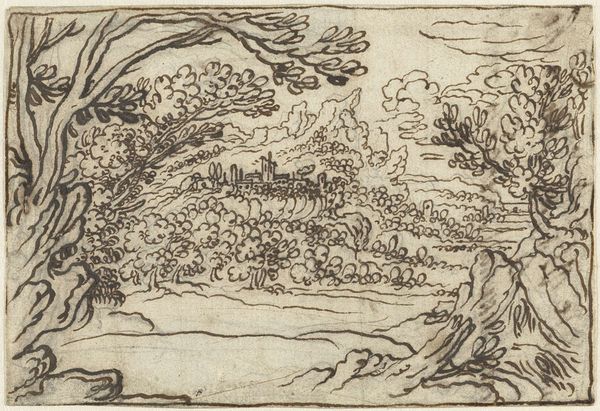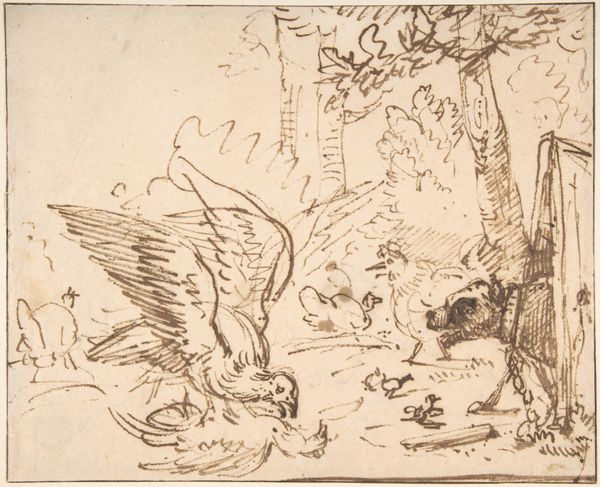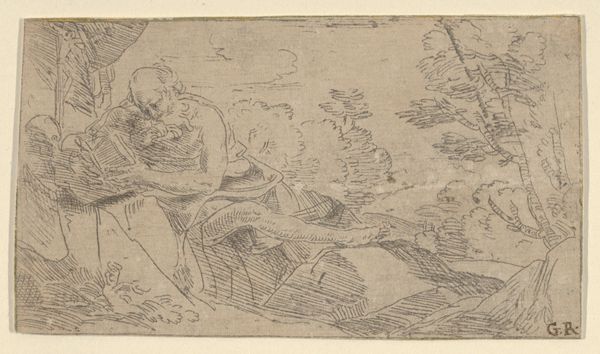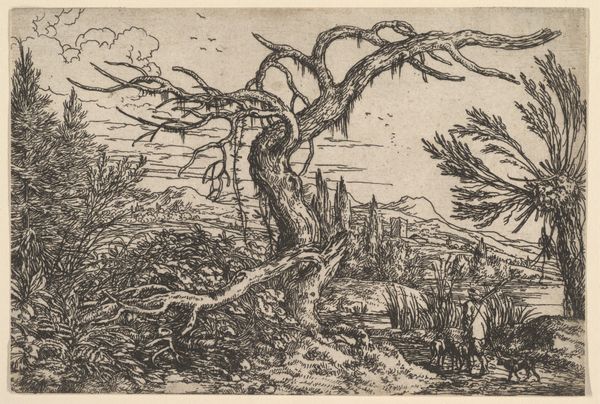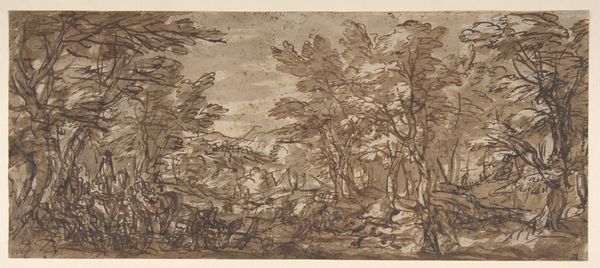
drawing, paper, ink
#
drawing
#
dutch-golden-age
#
landscape
#
paper
#
ink
#
line
#
genre-painting
#
realism
Dimensions: height 85 mm, width 110 mm
Copyright: Rijks Museum: Open Domain
Curator: Today we're looking at "Hond op eendenjacht," which translates to "Dog on a Duck Hunt," a drawing attributed to Anthonie van Borssom, created sometime between 1640 and 1677. Editor: There's an immediate energy here. A flurry of lines depicting the dog leaping into the water, the ducks taking flight. It captures that split-second moment of chaos when the hunt begins. Curator: It’s quite representative of genre painting that grew in popularity at the time, capturing everyday life and leisure activities for a rising merchant class. The hunt itself had complex socio-political connotations, demonstrating wealth and access to land. Editor: Look at how the artist uses simple lines to convey depth! We see a layered effect that gives a sense of distance, even an entire story, playing out within this small work. How were the arts of drawing seen? Curator: Drawings in this period served multiple purposes; from independent artworks enjoyed for their aesthetic qualities, studies for paintings or engravings, or simply as an artist's personal exercises to sharpen observational skills and experiment. The prevalence of scenes such as these really speak to the Netherlands' booming artistic market at this time. Editor: What I also find fascinating are the recurring symbols present; dogs, birds and other animals often take on roles that carry social messages related to status or leisure activities. Are the symbols pointing to the Netherlands cultural identity or moral considerations for the time? Curator: The rise of genre painting directly coincides with growing societal values, with an awareness of national identity. These visual representations were indeed, laden with cultural symbols, meant to reaffirm contemporary notions of life, politics, and social standing in the burgeoning republic. Editor: It's interesting to consider how our modern ideas about art differ. We look at this scene today perhaps as a nice snapshot of a bygone era, but at the time it was reflecting, and reinforcing, social structures and cultural ideals. Curator: Exactly, it speaks to art’s vital role not just in recording, but in shaping societal understanding, that persists throughout history. Editor: It certainly enriches the experience to look past the literal imagery and uncover what it might've represented for its original audience. Thanks to historical contexts, that hunting image tells of not only the activity, but hints toward a sense of a period, morals, status and rising values.
Comments
No comments
Be the first to comment and join the conversation on the ultimate creative platform.
